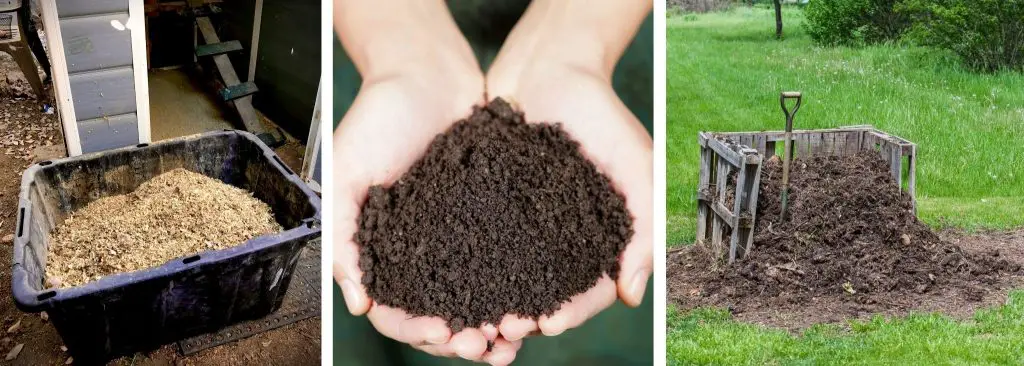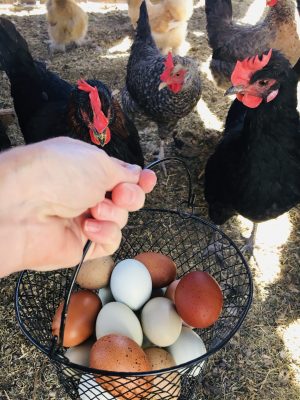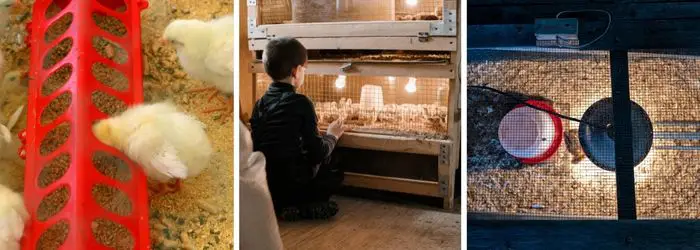
If you want to raise healthy and thriving chicks, it starts by keeping their environment clean. For young chicks, they live in a brooder for up to 6 weeks. This article will show you how to keep a chick brooder clean, with 5 best tips from chick experts.
- 1. How to Protect Yourself from Disease When Cleaning a Chick Brooder
- 2. Easiest, Cheapest and Cleanest Bedding to Use in a Chick Brooder
- 3. Chick Brooder Maintenance and Cleaning
- 4. How to Decrease Food and Water Messes in Chick Brooder
- 5. How Often Does a Chick Brooder Need Cleaned?
- CONCLUSION: 5 Best Expert Tips-How to Keep a Chick Brooder Clean
1. How to Protect Yourself from Disease When Cleaning a Chick Brooder
Can you get sick cleaning out a chick brooder? Yes, there are several bacterial, viral and fungal diseases that can be transmitted by inhaling particles of chick droppings or just by coming into contact with the droppings or respiratory secretions of the chicks.
During the cleaning process, dust and poop particles will be stirred up and you will come into contact with messy chick poop.
What to Wear When Cleaning a Chick Brooder
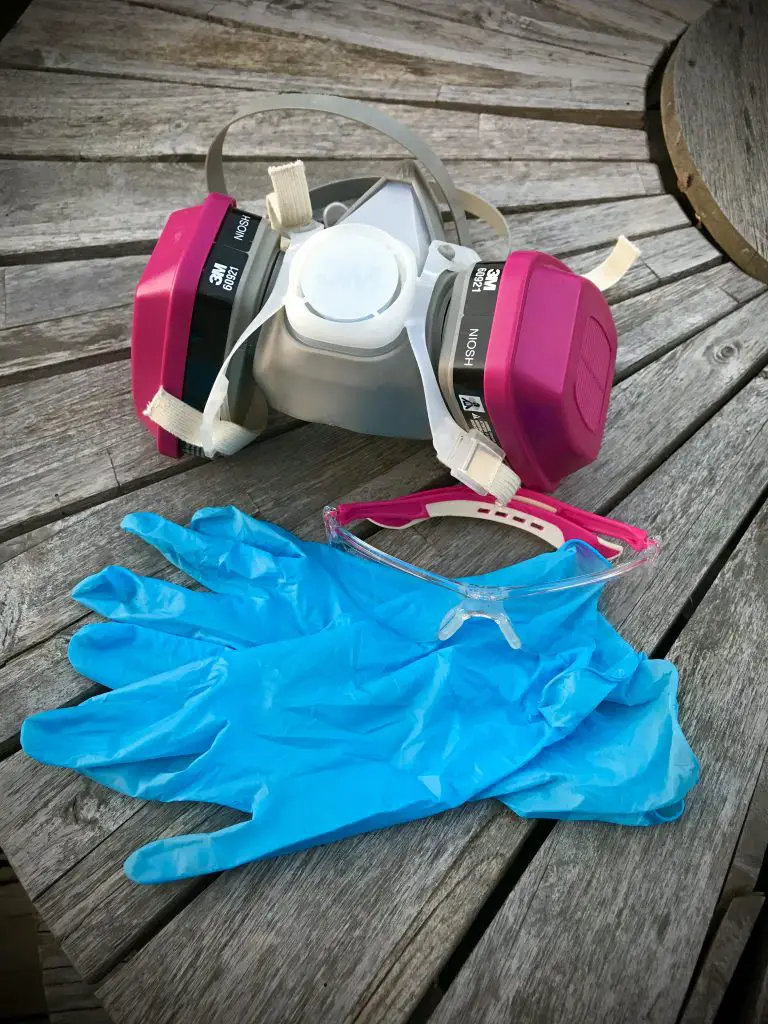
It is recommended to wear protective gloves, mask and protective eyewear when cleaning out a chick brooder. Latex gloves and a respirator are recommended, but a NIOSH approved N95 mask will do.
This may seem like overkill to some people to have to wear this stuff, just to clean out a chick brooder, but it is better to be safe than sorry. You can get sick from cleaning your chick brooder.
To help stop the spread of diseases from baby chicks to humans, take the time to put on your mask, gloves and protective eyewear when you are cleaning out the brooder box.
What Diseases Can Chicks Pass to Humans?
| DISEASE | HOW TRANSMITTED | HUMAN SYMPTOMS |
|---|---|---|
| 1. SALMONELLA (BACTERIAL) | MANURE, UNDERCOOKED EGGS AND CHICKEN | DIARRHEA, VOMITING, FEVER, ABDOMINAL CRAMPING |
| 2. CAMPYLOBACTER (BACTERIAL) | MANURE, UNDERCOOKED EGGS AND CHICKEN INHALING MANURE PARTICLES | DIARRHEA, VOMITTING, FEVER, ABDOMINAL CRAMPING |
| 3. HISTOPLASMOSIS (FUNGAL) | INHALING MANURE PARTICLES | COUGH, SHORTNESS OF BREATH |
| 4. AVIAN INFLUENZA- BIRD FLU, (VIRAL) | SALIVA, MANURE, NASAL SECRETIONS, INHALING MANURE PARTICLES | FLU-LIKE SYMPTOMS, PINK EYE, ABDOMINAL CRAMPING |
| 5. EXOTIC NEWCASTLE DISEASE (VIRAL) | DROPPINGS, RESPIRATORY SECRETIONS, INHALING MANURE PARTICLES | MILD FLU-LIKE SYMPTOMS, MILD EYE INFECTIONS |
| 6. E. COLI (BACTERIAL) | UNDERCOOKED FOOD, DROPPINGS | DIARRHEA, VOMITTING, FEVER, ABDOMINAL CRAMPING |
2. Easiest, Cheapest and Cleanest Bedding to Use in a Chick Brooder
Pine shavings is the most popular bedding chosen by chick raising experts. While there are many other types of bedding material to choose from, pine shavings top them all and for a variety of reasons.
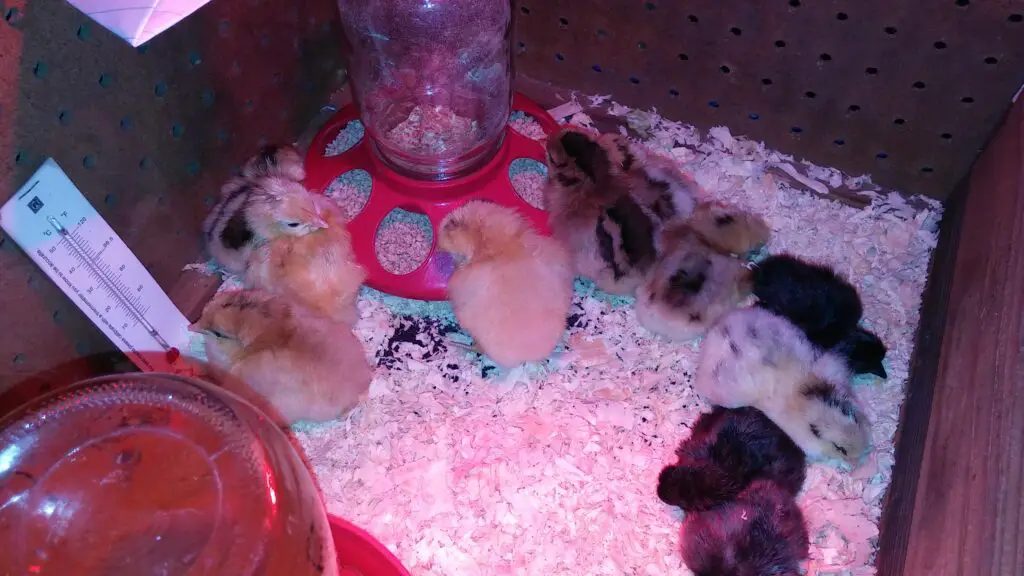
Benefits of Using Pine Shavings in a Chick Brooder
- Pine shavings are super absorbent
- It not only absorbs moisture, but odors as well!
- Decreased moisture means less likelihood of bacteria and diseases from occurring.
- It is a soft, comfortable place for your baby chicks to run and walk around.
- Pine shavings are safe for baby chicks.
- Some bedding, such as cedar shavings, contains natural oils that are toxic to baby chicks.
- Pine shavings are easy to apply.
- Most animal feed stores carry compacted pine shavings.
- Pine shavings are very reasonably priced compared to other bedding.
It is important to choose a bedding that meets all of these criteria. After all, this is where they will live their first several weeks of life!
3. Chick Brooder Maintenance and Cleaning
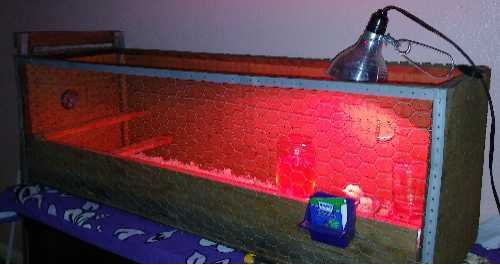
It is important to maintain a clean chick brooder. Chicks that are raised in a clean brooder are less likely to develop diseases and contract parasites. If you want to raise healthy chicks, it starts by making sure that their environment is clean.
10 Simple Steps to Cleaning Out Your Chick Brooder
Step 1: Add 2 inches of pine shavings bedding to your chick brooder.
Step 2: On a daily basis, sprinkle clean pine shavings on top of chick poop. This will help to absorb any moisture and smell.
Step 3: Continue to do this until the bedding reaches 4 inches. (If brooder becomes heavily soiled or moist, cleaning will need to take place right away.)
Step 4: Cleaning out the Brooder: Put on a mask, protective eyewear and latex gloves.
Step 5: Remove chicks from brooder and place them into another safe place, such as a large storage bin or box. If it is warm enough outside, you can place them into their “grow out pen” that you will eventually transition them to.
Step 6: Remove all bedding. I like to use a dust pan and wisp broom to clean out my chick brooder. Depending upon the size of your brooder, this may also work for you.
Step 7: Consider adding the pine shavings and chicken poop to your compost bin. It makes a great garden soil!
Step 8: Spray the flooring with an Apple Cider Vinegar/Water 50/50 solution. This will help to kill any bacteria, mites, lice, etc. that may be present. (I recommend using a vinyl flooring for your brooder floor. This makes cleanup simple and you can get rolls of this at the Dollar Store.)
Step 9: Wipe down the flooring with a dry, clean rag.
Step 10: Add 2″ of pine shavings and replace the chick feeders and waterers, perches, lighting and young chicks.
4. How to Decrease Food and Water Messes in Chick Brooder
- I recommend using a small, chicken wire platform to place your chick feeders and waterers on.
- This will help to keep your chicks from kicking pine shavings into the food and water.
- Place feeders at chick shoulder level to help prevent chicks from scratching at their food.
- Place funnels on top of the chick feeders and waterers.
- This will prevent chicks from perching on top and pooping inside of the food and water.
- This will also help to prevent them from tipping their food and water over.
- Clean up water spills right away.
- Bacteria, viruses, fungus and parasites breed in moisture. Keep it dry!
5. How Often Does a Chick Brooder Need Cleaned?
If at any time a chick brooder smells, becomes heavily soiled or has a buildup of moisture, it should be cleaned out immediately. Otherwise, it is safe to add bedding daily over droppings. Once it reaches a depth of 4″, it’s time to change it out for some fresh bedding.
Bacteria and many other diseases and parasites will thrive in a moist environment. This is why it is important to make sure that you keep your brooder moisture level down.
Depending upon the amount of chicks that you have and the size of the brooder box will determine how often you will need to change out the bedding. Most people that use the “deep litter method” in a brooder box, will do a thorough cleaning at least every 1-2 weeks.
Because I keep my brooder box inside for the first 3-4 weeks, I do a thorough brooder cleaning every week. When I do this, I change out the pine shavings, spray it down with ACV/water and wipe it clean. If water spills or if it smells, I will clean it out sooner.
Once I move the chicks to their “grow out pen” they have more space and I find that I only have to do a thorough cleaning every 1 1/2-2 weeks.
Conditions that Cause a Brooder to Become Heavily Soiled or Have Increased Moisture
| INCREASED MOISTURE | HEAVILY SOILED |
|---|---|
| NOT ADDING ENOUGH PINE SHAVINGS DAILY | NOT ADDING ENOUGH PINE SHAVING DAILY |
| SPILLED WATER | SPILLED FOOD AND WATER |
| RAIN | OVERCROWDING |
| NOT ENOUGH VENTILATION | CHICKS WITH DIARRHEA |
CONCLUSION: 5 Best Expert Tips-How to Keep a Chick Brooder Clean
- Always start with wearing the right protective gear when cleaning out a chick brooder.
- NIOSH approved N95 mask or respirator
- Latex gloves
- Eye protection
- Pine shavings are chick experts #1 recommendation for chick brooder bedding.
- highly absorbent
- safe for chicks
- soft, comfortable for chicks
- sold at most animal feed stores
- inexpensive
- Get on a routine chick brooder maintenance and cleaning schedule.
- Add pine shavings daily to cover chick poop. This will absorb moisture and smells.
- Change bedding when it is 4″ deep.
- Spray flooring with apple cider vinegar/water solution to kill bacteria, diseases, parasites.
- Do a thorough cleaning at least every 1-2 weeks.
- Clean spills up right away.
- Food and Water Placement
- Place chick food and water up on small platform made of 1/2″ hardware cloth. This will help to prevent chicks from kicking bedding into the food and water.
- Do a thorough cleaning at least every 1-2 weeks.
- Clean spills up right away.

